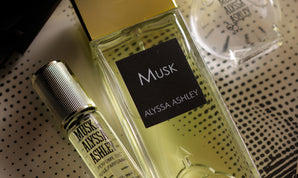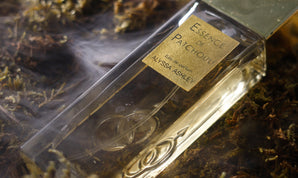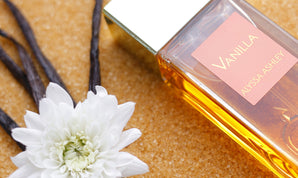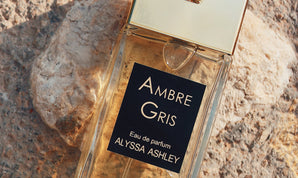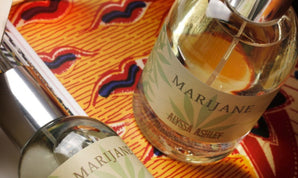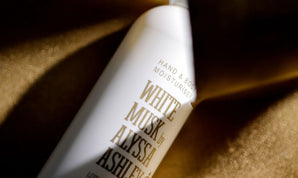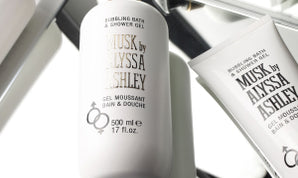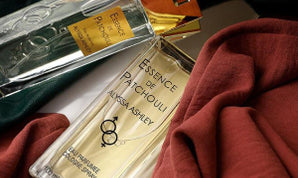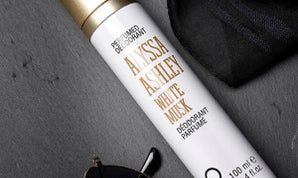If you've been following me for a while now, you'll know about my relationship with art, In fact, I have already mentioned my history of familiarity with art in more detail.
It is precisely the concept of family that runs through my history, my passions and my work. On one hand, Enrico Donati, an internationally renowned contemporary artist (whom I will tell you about in this article) gave birth to me, and on the other hand, it is the history of my family that has inextricably linked me to the world of perfumery. After all, and as I love to repeat it, perfumery is an art form and their association could not be more harmonic.
So I follow this trail when I think of a perfume, especially when it’s for a new scent. In some cases, it’s a work of art that guides me, or an artistic movement, a concept. In other cases, the association happens after, just like in the case of Robbiane, which I'm about to tell you about....
What are Robbiane?
It's likely that you're wondering and no, you don't have to worry if you have no idea what I'm talking about, because they are rare artifacts that you've probably seen without knowing their interesting history.
First of all, let's talk about the etymology: robbiane means "of the Della Robbia", which is the family/workshop that invented this technique and produced these works of art.
The Robbiane are artefacts (often high reliefs or high-rise) in glazed terracotta with a distinctive white and blue color. The theme of these works was focused around religion, as in most of the fifteenth-century art.
The fascination of these works, which thanks to their beauty and luminosity created a real trend during that century, is increased by the history of the artists who created them.
Just as it happened to me that perfumery became a "family affair", centuries earlier the Della Robbia family made the success of this technique their own, from start to finish.
The History of Glazed Terracotta
When in 1432 Luca Di Simone della Robbia (known as Luca della Robbia) enrolled at the art school of the Masters of Stone and Wood in Florence - his hometown - to become a sculptor, he would have never thought that a few years later his life would have changed for both him and his family.
Although he loved sculpture, Luca had always been an experimenter: for years he had been carrying out studies to make figures brighter, more alive and luminous.
He was in fact convinced that the eye would be captured by the brightness and the polish of the surfaces (think of the careful polishing dedicated by Michelangelo for his "finished" works) and for this reason he started with simple experiments of painting.
Being unsatisfied with the result which did not appear shiny but above all long-lasting and resistant to atmospheric agents, he experimented with a technique of sculpture in terracotta covered by the glaze, that is a "stanniferous" enamel based on oxides (tin and lead above all) responsible for the glass effect.
The result was fully successful right from the first applications and exceeded in processing and brilliance even those of the much older majolica tiles that we can consider, in terms of technique, the forerunners of Robbiane.
Luca's success was immediate!
He was commissioned dozens of works, the Medici family put him under their protection and he worked on some of the most important sites (artistically speaking) in Florence, such as the Pazzi Chapel in Santa Croce and the Chapel of the Cardinal of Portugal in the Basilica of San Miniato. For these reasons, after not even 10 years of adherence to the art of stone masters, he decided to abandon sculpture to devote himself exclusively to ceramics.
A family secret
As the demands grew, Luca decided to buy a bigger house to transform into a workshop, together with his brother Marco. Luca decided, at the untimely death of Marco, to adopt all 6 of his children to whom he would then teach the trade. As it often happens "even in the best families" one of them, Andrea, stood out for his skill and competence.
In fact, he was entrusted with the management of the workshop, which had an even greater success and it was with Andrea that the association of the colors white and blue were associated with the Della Robbia style.
The characteristic of the robbiane is precisely the two-toned: tin oxide was added for the white color, cobalt for the blue and copper for the green; the only disadvantage of this technique is to allow the reproduction only of these colors with the addition of some other such as yellow (which was used for the lemons of the decorative festoons) and the black / brown for some details.
Despite the fact that one might think that a few colors would have diminished the communicativeness of the works, the artists managed to leave this characteristic unchanged, especially if one thinks that many of these works are still freely usable in the streets of the cities of Tuscany, Umbria, Liguria and even Campania. The technique in fact allows the work to maintain unchanged the brilliance of color despite the atmospheric agents and the centuries that have accompanied them.
The Decline
With the change of tastes and trends and the arrival of the new century, the workshop, especially after Andreas departure, was not able to modernize its product. Moreover, new competitors had appeared and wanted to take over the supremacy of the technique, without however having abandoned the other activities. First Andreas’ children and then the grandchildren tried to relaunch this tradition in successive phases, which had had its day by then, and, not by chance, was no longer proposed according to this scheme in the history of art.
The name of the Della Robbia family, more than that of Andrea or Luca, remained carved in stone (or, to be more precise, in terracotta), strong of a community and family work.
The Musk and Original Sin
So I tried to think which of my perfumes reminded me of Robbia's extraordinary art and I lingered on these luminous, detailed works, in which something often stands out from the rest: lemons, as points of light, very frequently inserted in the festoons, but in general the yellow that is found abundantly in a work by Giovanni, Andrea's son.
Adam and Eve is certainly not one of the most famous works, it was made in 1515, but it is an example of rare beauty of the potential of the technique and the mastery of the workshop. The references to the male and female bodies stand out on the yellow that officially becomes the color of temptation. In my interpretation the apple is therefore replaced by lemon, or better, by cedar, and the perfume recalls the voluptuousness and sensuality typical of Musk and fully expressed in the Cedar Musk by Alyssa Ashley version.
